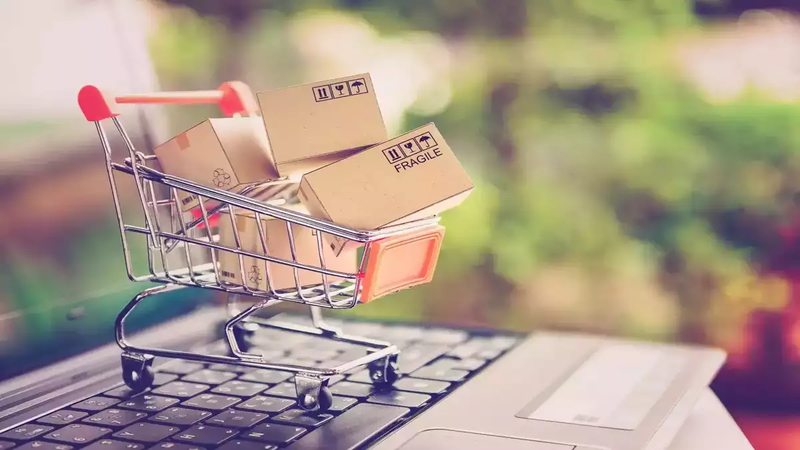
Unlocking the Power of First-Party Data: A Key to Winning Campaigns
December 17, 2024
Maximizing Last-Minute Sales with SMS Marketing: A Strategic Approach
January 9, 2025In today’s fast-paced, always-connected world, the line between digital and physical shopping has blurred. As more consumers turn to their mobile devices to make purchases, businesses are racing to enhance mobile shopping experiences. But how can retailers truly optimize the mobile experience for their customers? Let's explore the secrets to creating a smooth, engaging, and rewarding shopping journey on mobile.

1. Speed is the Name of the Game
If you've ever tried to make a purchase on a slow-loading website, you know the frustration all too well. Time is precious, and shoppers aren’t going to wait around for pages to load. A study found that 53% of mobile site visits are abandoned if a page takes longer than 3 seconds to load. That’s a lot of missed opportunities!
To optimize for speed, retailers should focus on compressing images, reducing unnecessary code, and using responsive design techniques. The smoother and quicker the browsing experience, the happier (and more likely to buy) your customers will be.
2. Mobile-Friendly Design = Happy Shoppers
Mobile shopping should feel like a seamless extension of the in-store experience. That means designing for small screens with big, bold buttons, easy navigation, and a layout that minimizes the need for excessive scrolling or zooming.
A mobile-optimized website should be clean, simple, and easy to navigate. Make sure your product pages are well-organized, with clear product images and descriptions. The easier it is for customers to find what they’re looking for, the more likely they are to make a purchase.
3. Responsive Checkout for the Win
The checkout process is often where carts are abandoned, but a smooth, responsive, and fast checkout experience can turn potential losses into sales. Mobile shoppers expect to complete their purchases quickly and without frustration.
Consider integrating one-click checkout options or payment solutions like Apple Pay or Google Pay, which can dramatically simplify the process. Also, don’t forget to include a progress bar that shows customers where they are in the checkout journey, reducing any uncertainty.
4. Personalization Makes Shoppers Feel Special
Let’s face it—everyone loves a little bit of personal attention. Personalization on mobile apps or websites can go a long way in making customers feel valued. By leveraging data like purchase history, browsing habits, or location, you can create a tailored shopping experience that speaks directly to the customer.

This can include personalized product recommendations, localized deals, or even customized marketing messages. Personalization builds stronger connections with customers and encourages them to return for more.
5. Incorporate Engaging Features Like AR and VR
Technology is constantly evolving, and brands can take advantage of it to create immersive and exciting mobile shopping experiences. Augmented Reality (AR) and Virtual Reality (VR) have made huge strides in retail, allowing customers to visualize products in their environment or even try them virtually before making a purchase.
Imagine a customer using their phone to see how a new sofa looks in their living room or trying on a pair of shoes using a virtual fitting room! These technologies not only enhance the shopping experience but also help customers feel more confident in their purchase decisions.
6. Simplify Search with Advanced Filters and Voice Search
Finding the right product should be easy, and that’s where advanced search functions come in. Providing filters based on category, price range, or size allows customers to zero in on what they want quickly.
Voice search is another great tool that can enhance the shopping experience. With the rise of virtual assistants like Siri and Google Assistant, many customers now prefer speaking to search rather than typing. By optimizing your site for voice search, you make it even easier for shoppers to find what they're looking for.
7. Offer Seamless Customer Support
Shopping on mobile often involves a need for fast and easy support. Offering chatbots, live chat features, or even video calls can help customers resolve issues in real-time, improving satisfaction and reducing friction. The key here is being available when the customer needs assistance—whether it’s at 3 PM or 3 AM.
8. Easy Returns and Transparent Policies
The mobile shopping experience shouldn’t end at checkout. A hassle-free returns policy and transparency in shipping and returns details help boost customer confidence. Shoppers want to feel secure that if the product doesn't meet their expectations, they can easily return it.
Make sure to clearly display return and shipping information on your mobile site or app. Having a simple, easy-to-understand returns process also fosters loyalty, making customers more likely to purchase again.
9. Integrate Social Media and Reviews
Social proof plays a huge role in the modern shopping journey. Shoppers are increasingly turning to reviews, ratings, and social media for insights before making a purchase decision. By integrating reviews and ratings into your mobile experience, you make it easier for customers to find what they’re looking for and gain confidence in their choice.

Incorporating shoppable Instagram posts, TikTok links, or Facebook ads into the app allows customers to easily move from browsing social media to making a purchase—all from their phones.
10. Don't Forget the Push Notifications
Push notifications are a great tool for re-engaging customers. Whether it’s a reminder about an abandoned cart, a special sale, or a personalized offer, these notifications can drive traffic and conversions.
However, don’t overdo it. Too many notifications can become annoying, so it’s important to find a balance. Personalized, timely messages that provide value to the shopper will encourage them to stay connected and keep coming back.
Final Thoughts: The Future of Mobile Shopping is Bright!
As mobile shopping continues to evolve, optimizing for a smoother, more engaging experience will be key to winning customers’ hearts and their business. By focusing on speed, design, personalization, and technology, brands can create an experience that not only meets but exceeds customer expectations. So, whether it’s through fast checkout, personalized offers, or cutting-edge features like AR, the future of retail is mobile—and it's looking brighter than ever!
So next time you’re tweaking your mobile shopping experience, keep these tips in mind—your customers (and your bottom line) will thank you!


